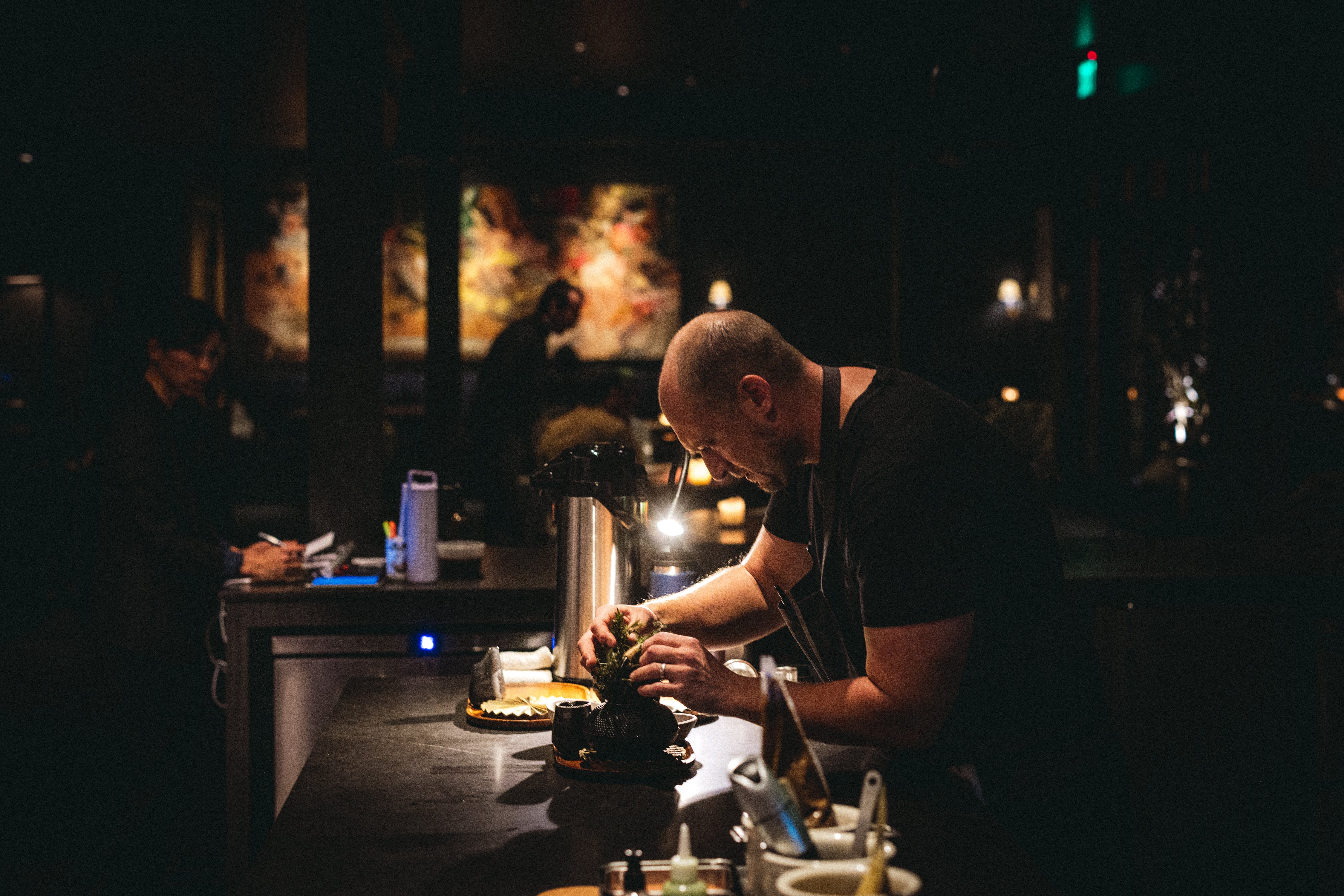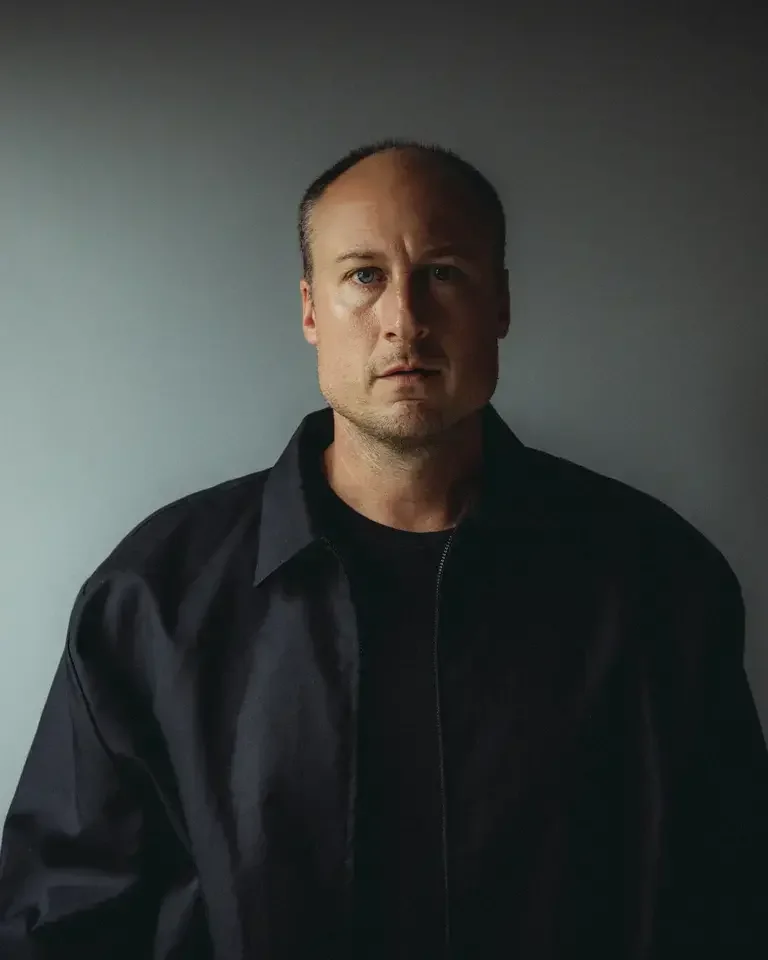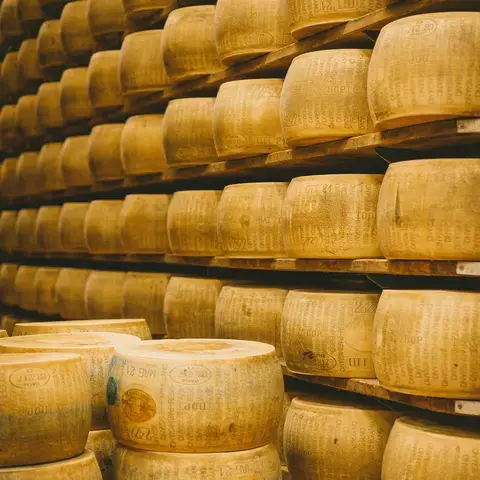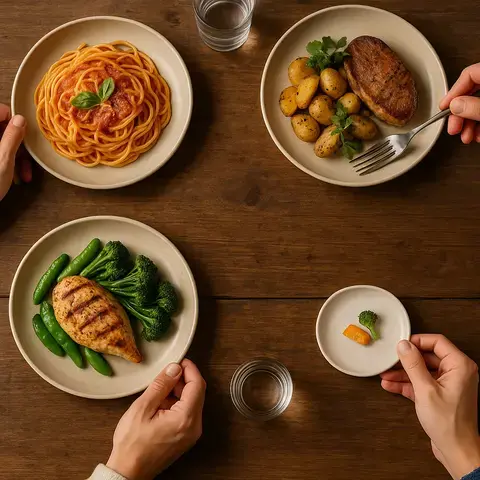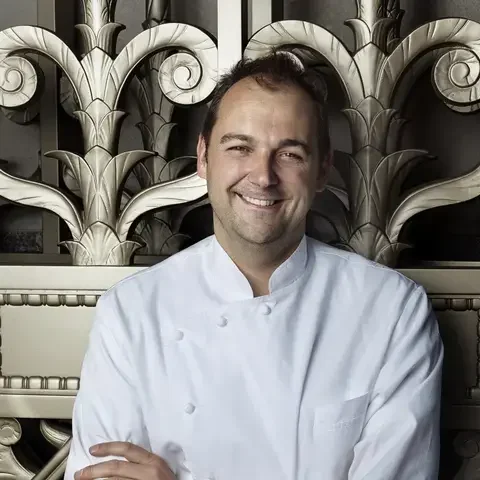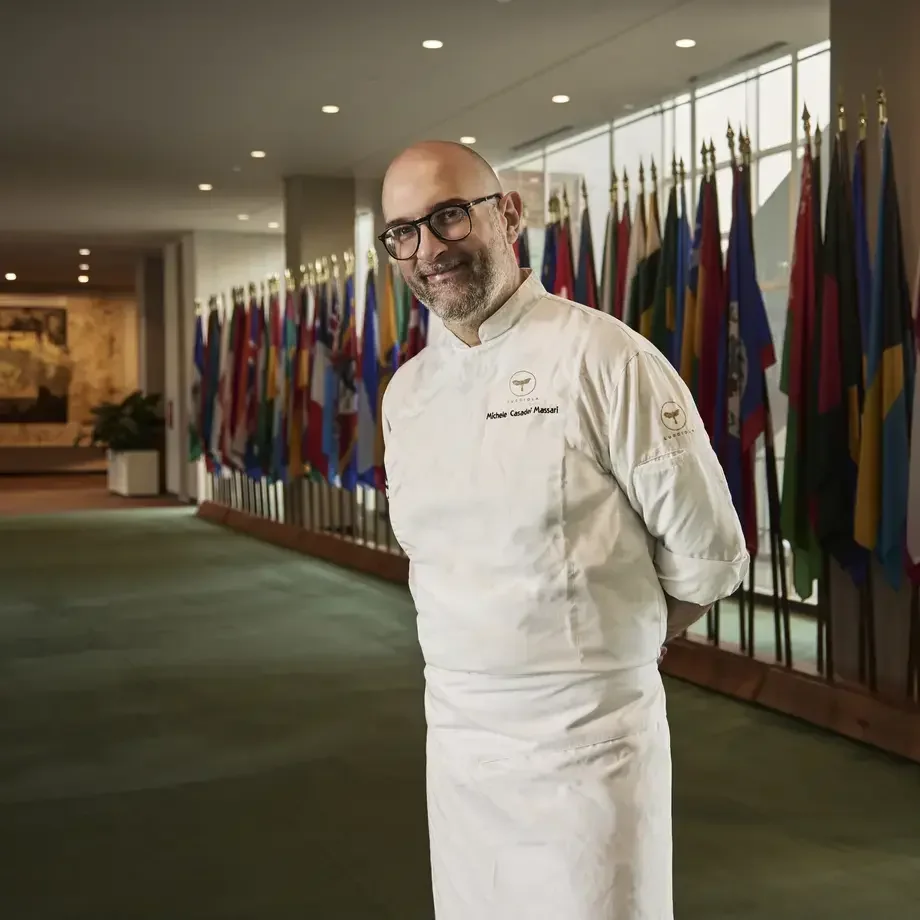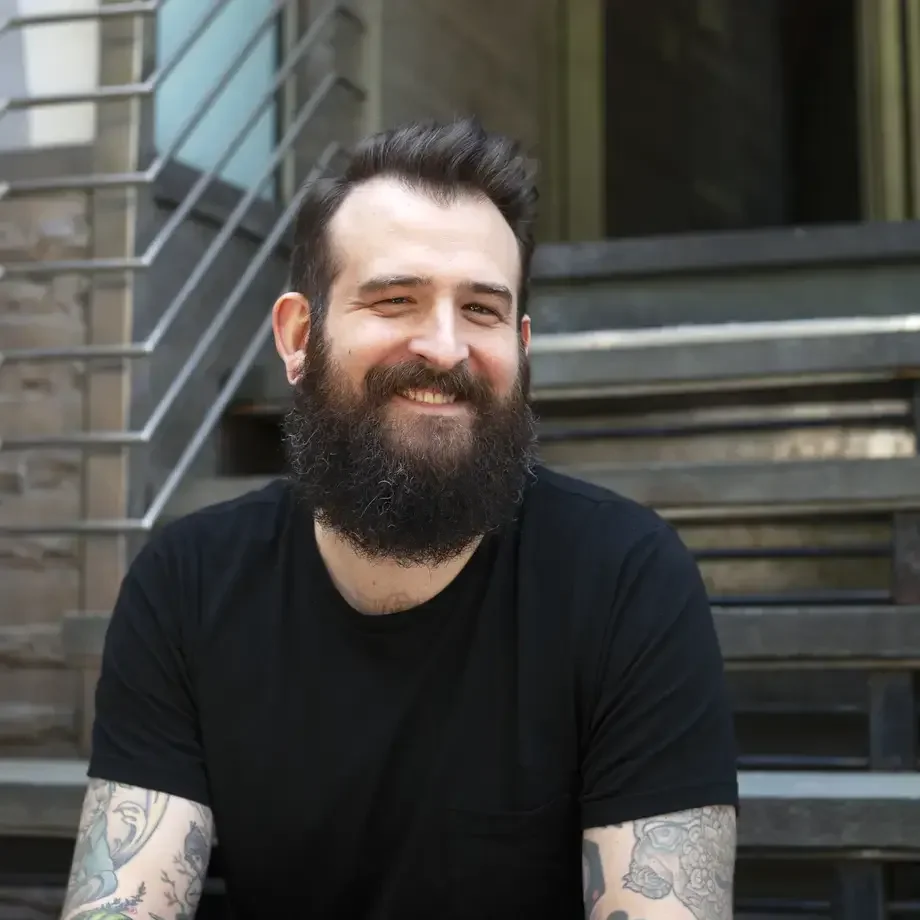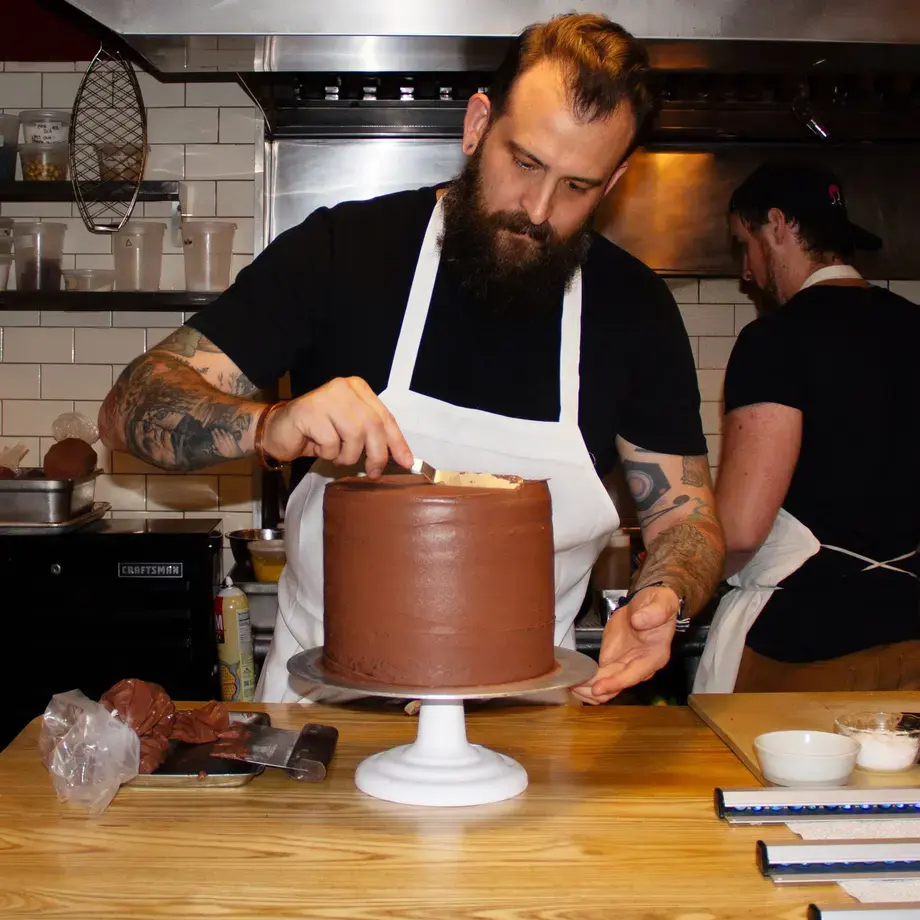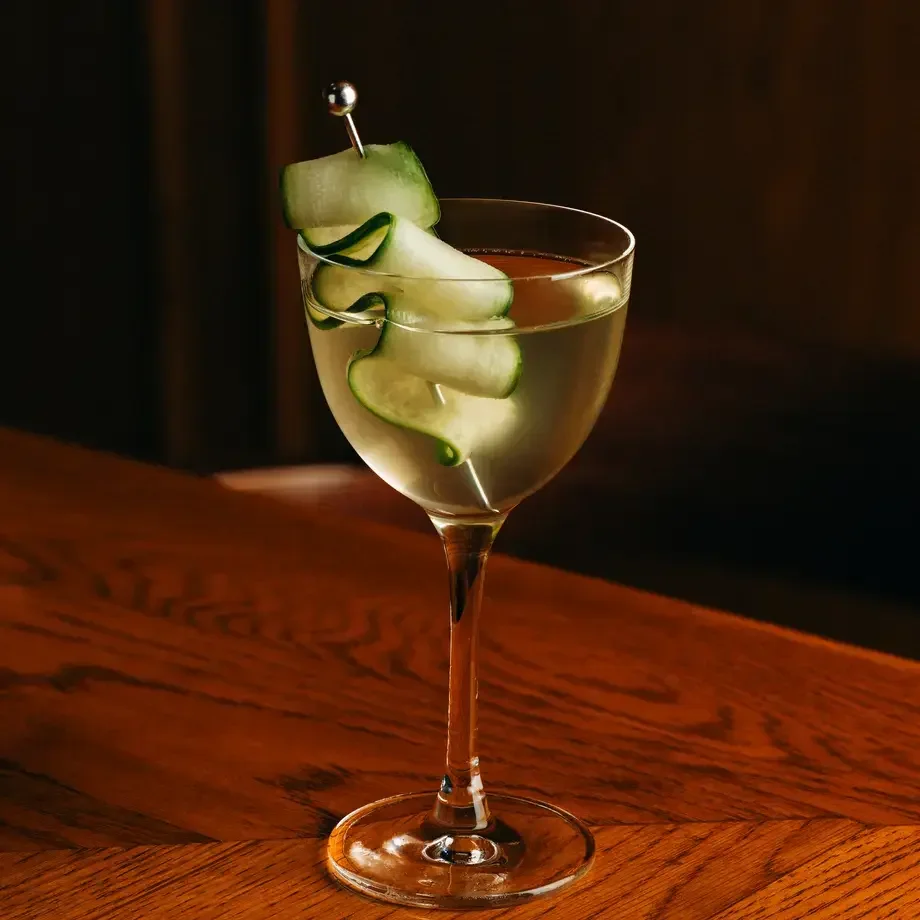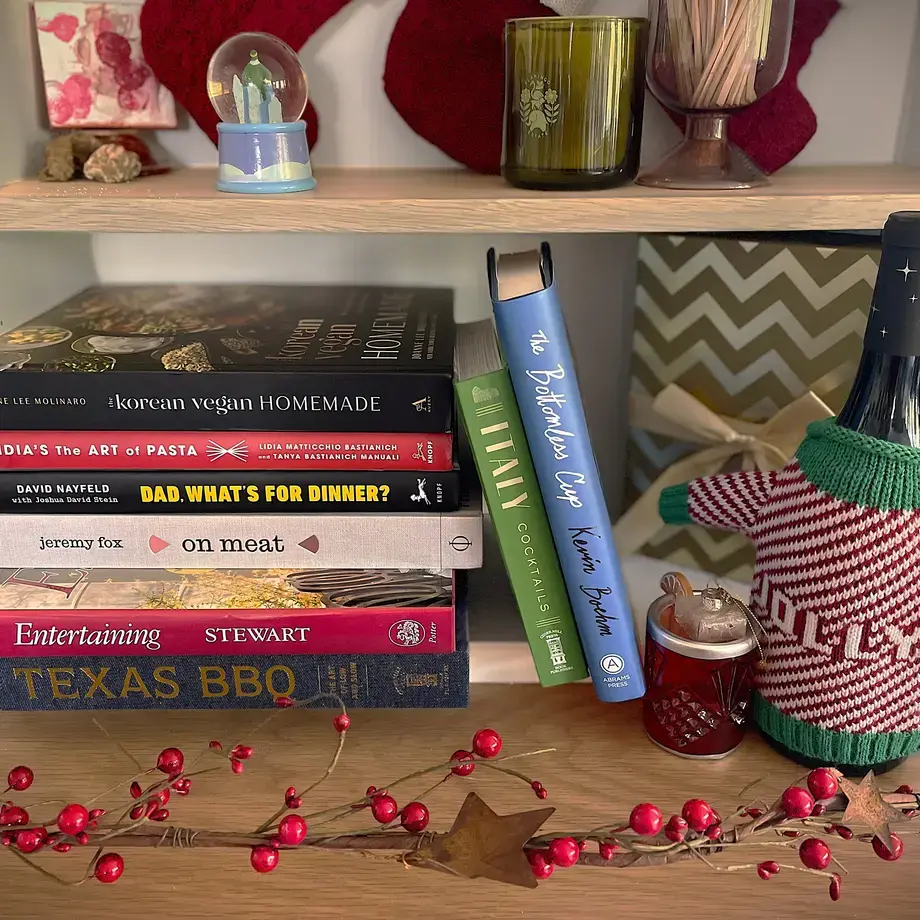“It’s reminiscent of what a culinary student would do,” he texted me. “The dish isn’t really about the coffee and caviar pairing. Coffee and caviar really don’t pair that well together. It’s about how this relationship came to be.” Which was when Dave was drinking a Dunkin’ Donuts French Vanilla-flavored coffee one morning in his work kitchen while tasting a supplier’s Osetra caviar, noticing they shared some notes of hazelnut and brown butter. So Dave doesn’t make a coffee-vanilla cream like Claude guessed; he makes an egg-heavy custard. Coffee goes with the egg, as does the caviar. “Without the egg element, the dish is a massive failure. But this comes through understanding not how to make something, but how to connect two things that seem so far apart.”
When Dave sent me his recipe for Coffee, Caviar, I saw that Claude wasn’t even close. It was way more complicated. Claude completely omitted the vanilla mist, which is steeped for 48 hours and sprayed on each dish before serving. It also missed the 3 grams of lapsang tea oil that goes with the hazelnuts on top. Stupid Claude.
But Dave doesn’t dislike AI. In fact, he used it to generate images of the restaurant for the investor deck he created for Seline. So he suggested that I feed Claude the ideas he had when he created Coffee, Caviar and see if it could come up with a new dish.
Though I was too dumb to realize it while I ate it, Dave made the dish to “serve caviar in a non-traditional manner. To move it away from something that one covets. So the stacking of bowls is a nod to Thomas Keller, but the material chosen to stack is broken concrete, which is the most pedestrian and imperfect material we have—the opposite of his porcelain.”
I instructed Claude, using a description Dave came up with, to “invent a dish for Seline in Santa Monica, a high-end tasting menu restaurant. Refute the notion of luxury with caviar in the dish presentation and walk the line of refinement and rustic with the presentation of a luxury ingredient. Include a cookbook-style recipe and a name for the dish.”
It spat out a dish called Tide Pool Memories. Claude described it this way: “This dish challenges traditional caviar presentations by drawing inspiration from the Santa Monica tidepools, presenting luxury ingredients in a way that connects with the raw beauty of the California coast.”
The dish consisted of cultured cream with kelp powder, topped with a scoop of sturgeon caviar, surrounded by dollops of frothed ‘sea foam’ made from salt water, soy lecithin, yuzu juice, and cypress oil.


